Nature for People: Socio-environmental Landscapes Research Program
All of the research projects are collaborative efforts with faculty in the Center for Land Use Efficiency (CLUE) and the Florida-Friendly Landscaping Program. One study focused on water use in FFL landscapes and the other studies focused on social aspects of landscapes, with the goal of learning about landscape preferences and barriers to adopting more sustainable landscapes.
-
FDEP Florida-Friendly Landscapes Research Grant
This Florida Department of Environmental Protection grant was a joint effort with the University of Central Florida Stormwater Management Academy and the UF Department of Environmental Horticulture. Homeowners in a community south of Tampa were recruited to attend landscape design workshops and volunteer to replace their traditional turf front yard landscapes with Florida-Friendly landscapes. The goal of the study was to learn more about the barriers, including preferences and perceptions, to adopting Florida-Friendly landscaping practices. The most consistent barriers were lack of knowledge about FFL landscapes and uncertainty about maintenance and the visual appeal.
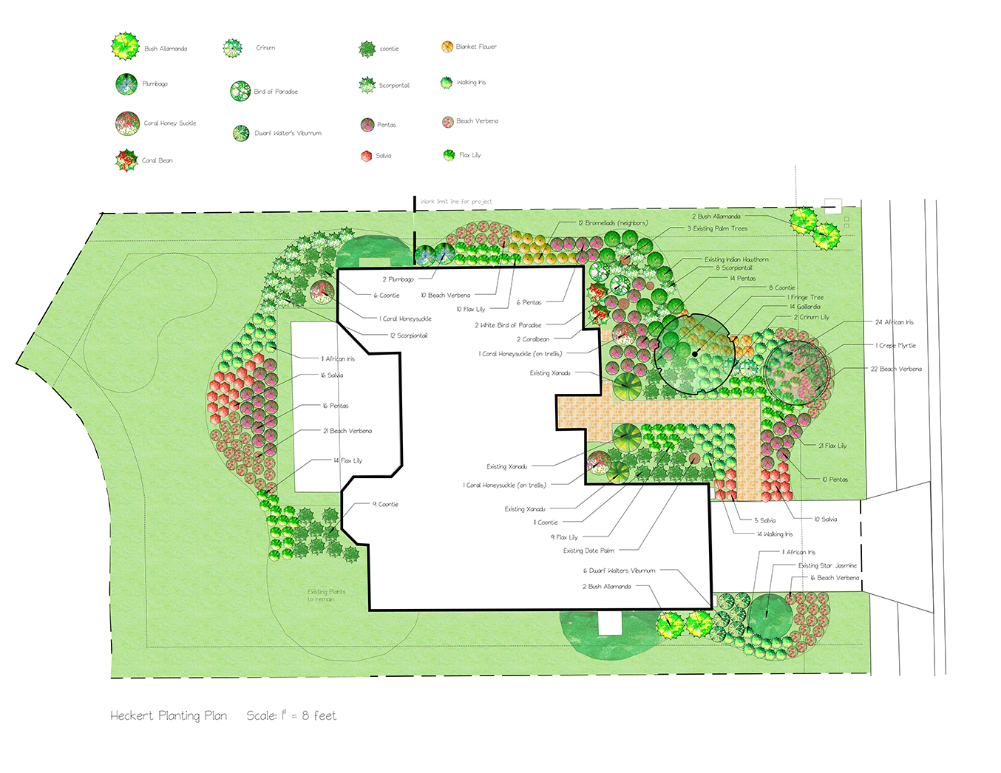
This landscape plan was developed for a study participant who wanted to have a more sustainable yard that was less turf and drought-resistant plants.
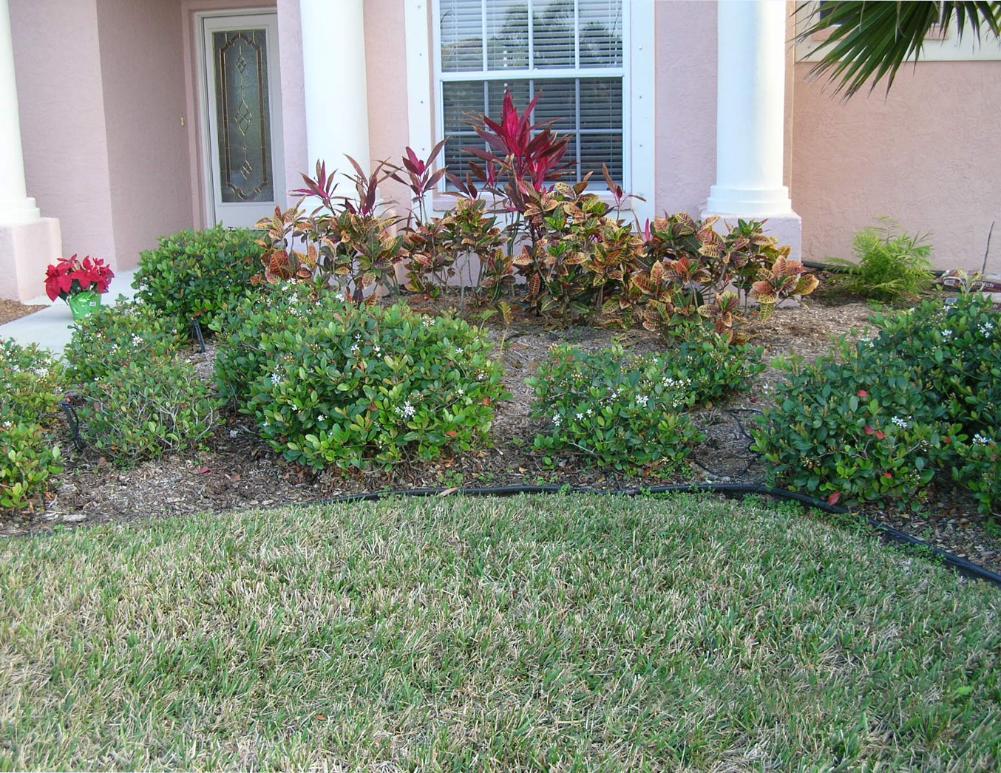
The before photo of the front yard shows a typical central Florida landscape of crotons, Ti plants, and Indian Hawthorn, with a large amount of turf.
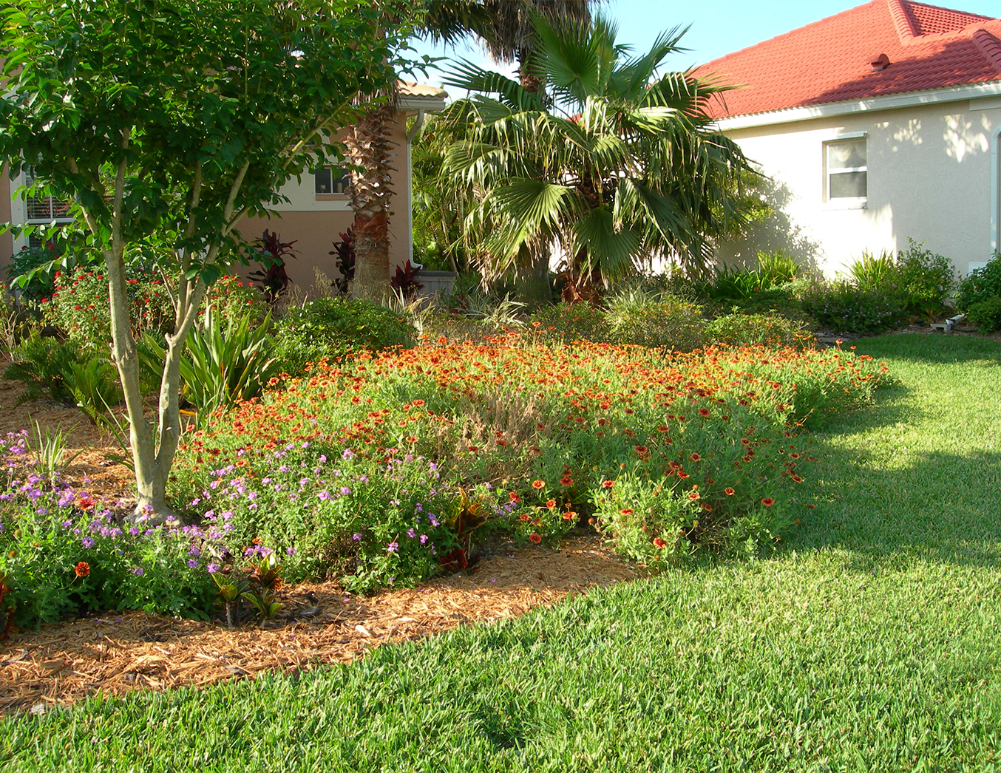
The same house with less turf and more native plants in the front yard about 2 years after the new plants were installed.
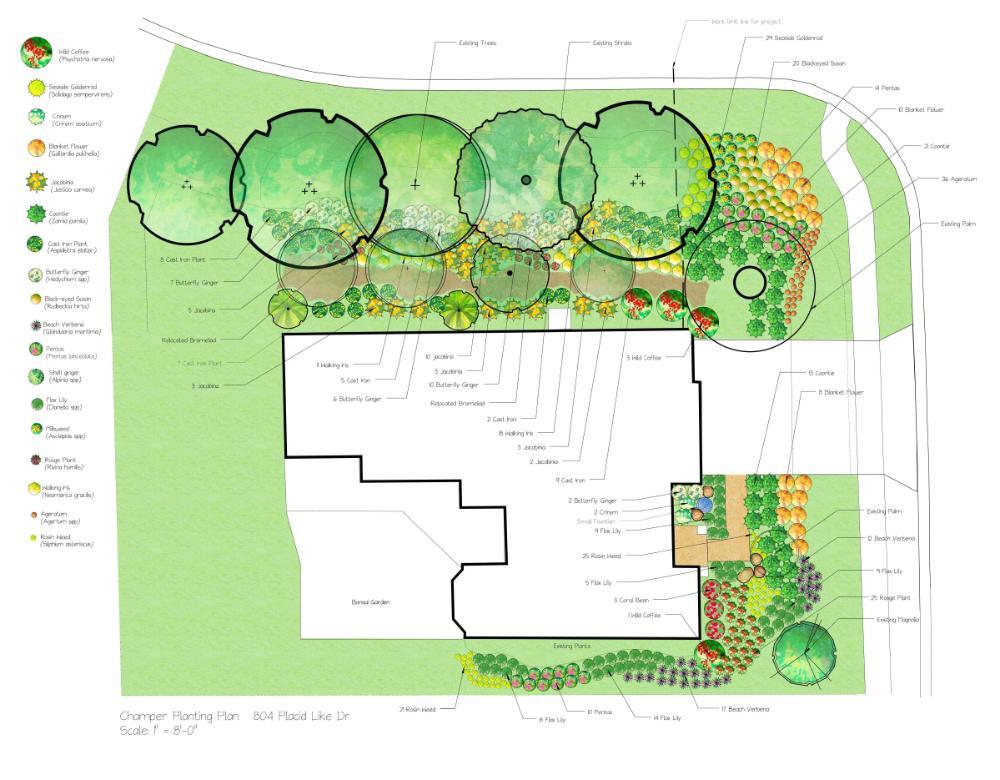
This planting plan was designed for another study participant who wanted more wildflowers in the landscape they had already started in their front yard.
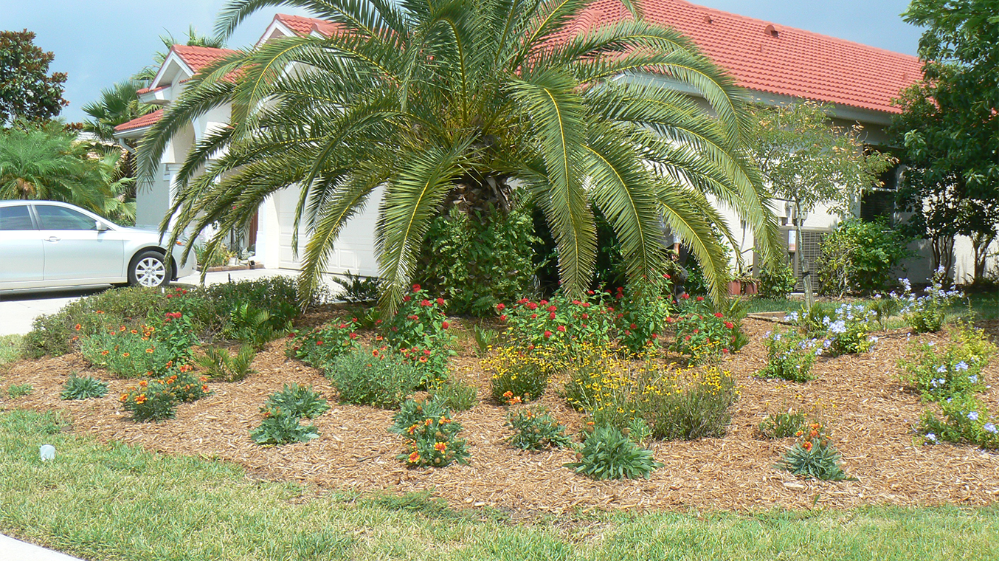
The existing landscape had some wildflowers, but the plants were spaced too far apart and not well-organized.
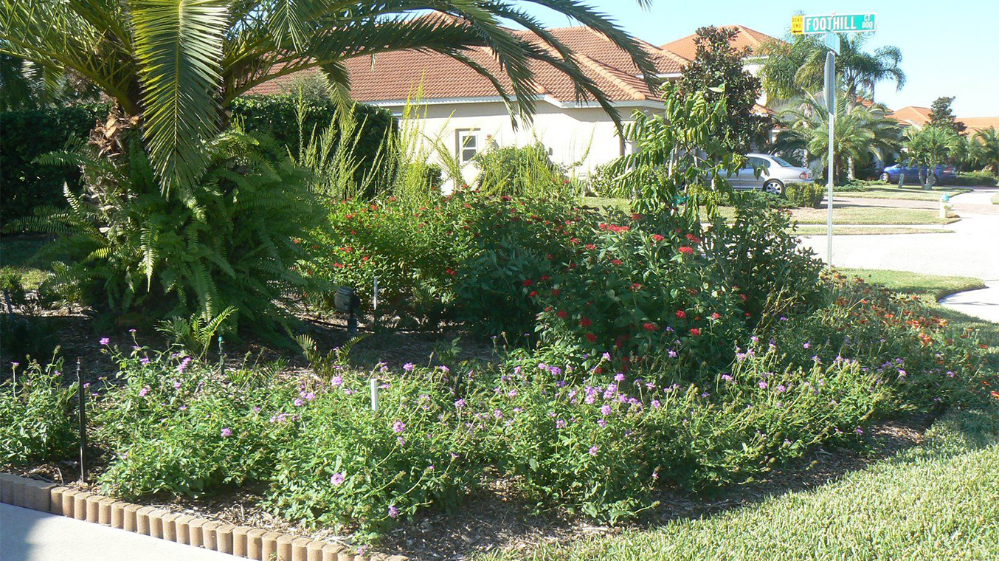
The same house with less turf and bigger clusters of wildflowers that showed better in the landscape.
-
Lakewood Ranch Stormwater Pond Research
Lakewood Ranch is a large community south of Tampa. Pond managers contacted UF researchers for help with resolving residents’ complaints about unsightly algae growth in stormwater ponds. Faculty and extension agents in the Center for Landscape Conservation and Ecology (CLCE) helped community pond managers facilitate focus group meetings to learn more about the preferences and perceptions of homeowners for vegetated shorelines. We also designed and planted a shoreline to demonstrate plant options for homeowners. Focus group results showed homeowners had preferences for “neat” plants and were willing to have more vegetation to attract wading birds.
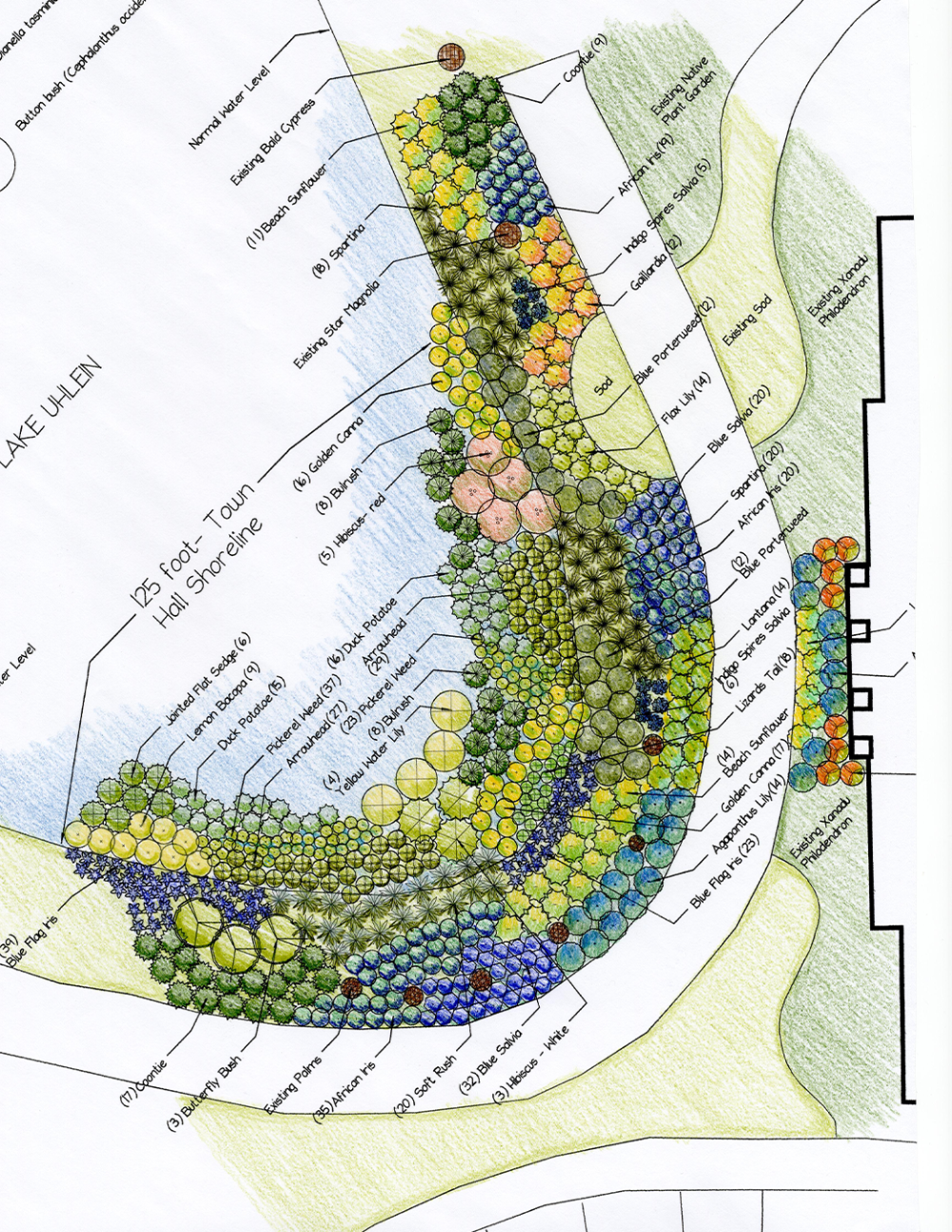
A demonstration planting plan for stormwater shorelines was designed and installed at Lake Uhlein, behind the community center.
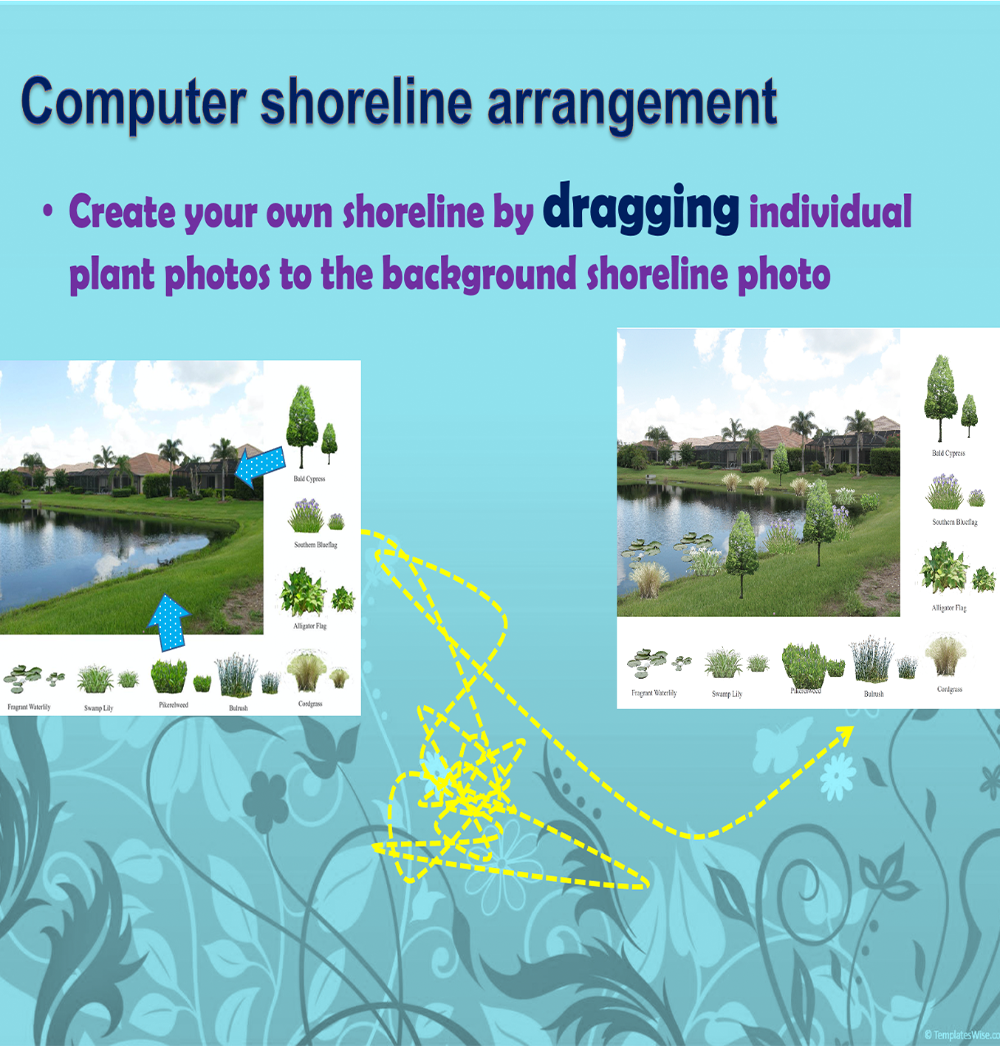
The instructions on an app my graduate PhD student developed for creating a shoreline arrangement of plants by dragging and dropping the plant photos along a bare shoreline.
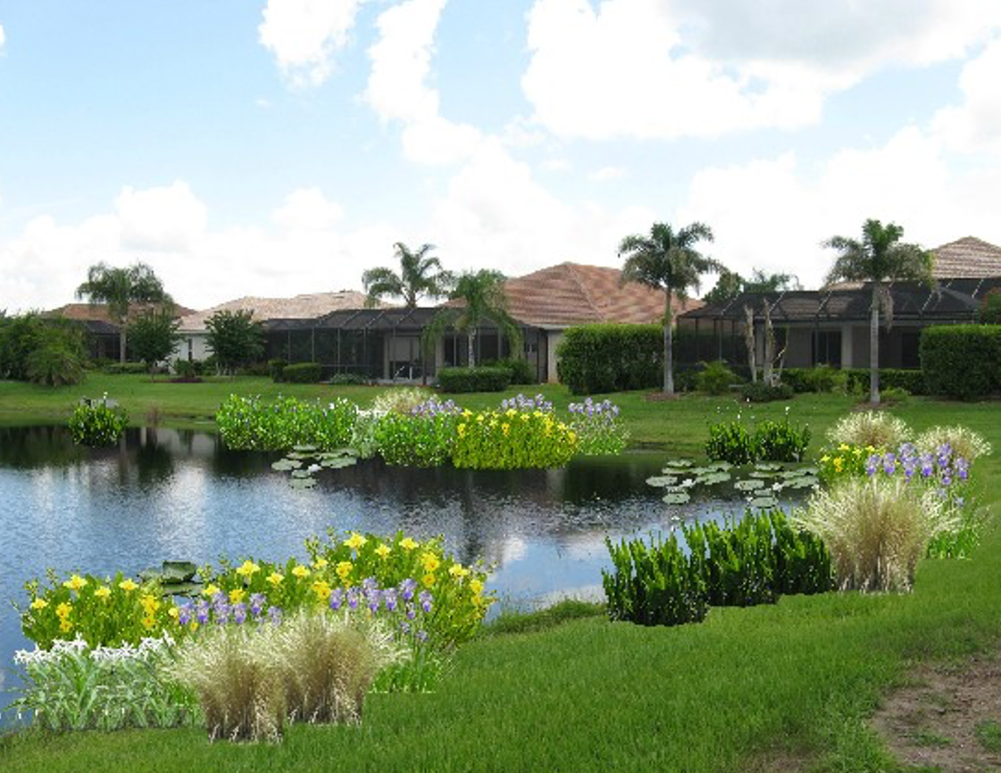
A study participant created this design by dragging and dropping plant symbols to create plant groupings that they liked.

This poster was created for focus group participants to learn about shoreline plants and to assess their aesthetic references for each of the plants.
-
UF IFAS Landscape Unit Florida-Friendly Landscape Research
Research at the landscape unit plots included comparing irrigation, plant and turf grass combinations to improve water conservation in Florida Urban Landscapes. Three replicate plots were designed to mimic the front and back yard of a typical one-quarter acre residential lot with 75% turf and 25% plants in the traditional front yard and 25% turf with 75% plants in the FFL back yard. Plots were irrigated for 3 years and monitored for water use. The FFL plots used 84% less irrigation water than the traditional landscapes used.
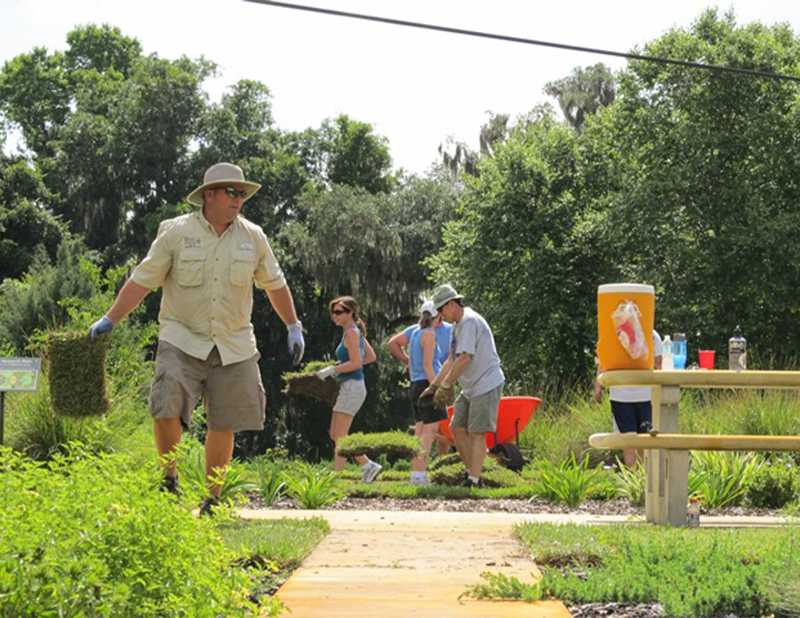
UF faculty and student volunteers lay turf at the FFL research plots.
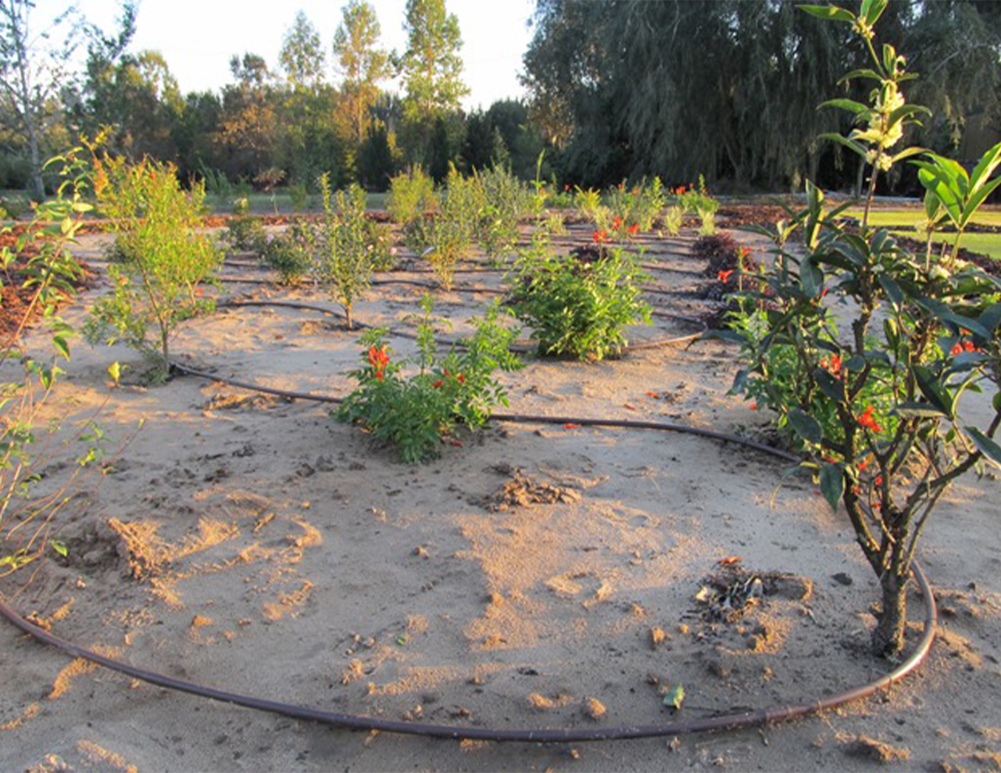
Newly laid drip irrigation tubing at the FFL landscape research plots. Drip irrigation micro-sprays and rotors were used for irrigation.
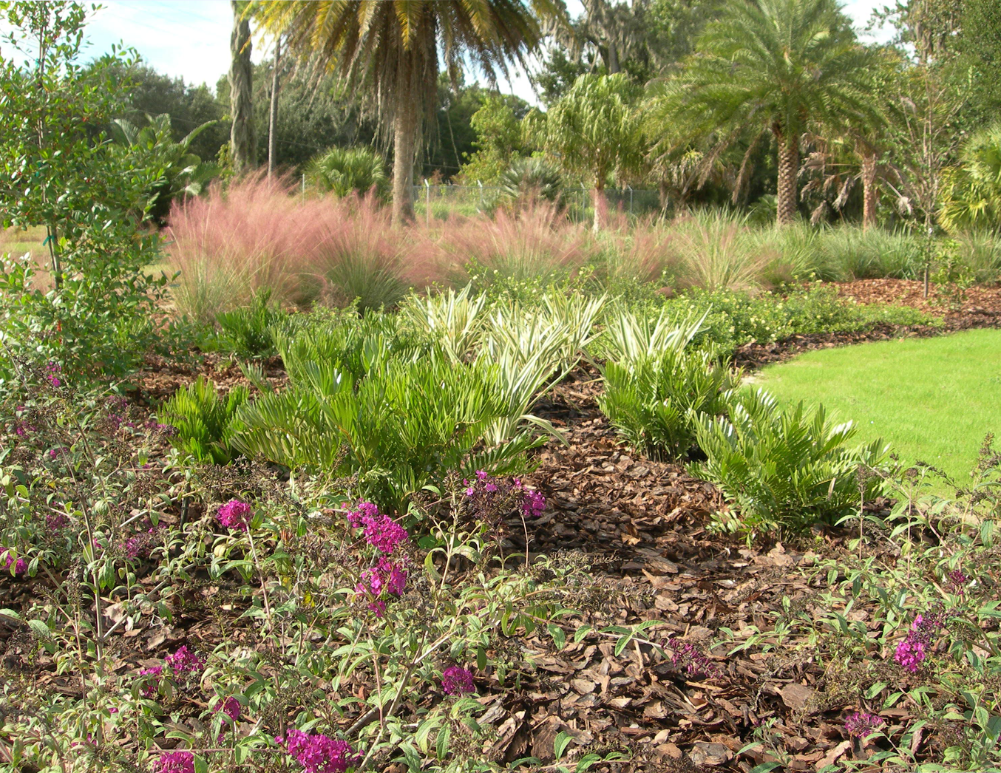
Two years after planting, the plant beds in the Florida-Friendly back yard of Plot 2 are doing well with little irrigation.
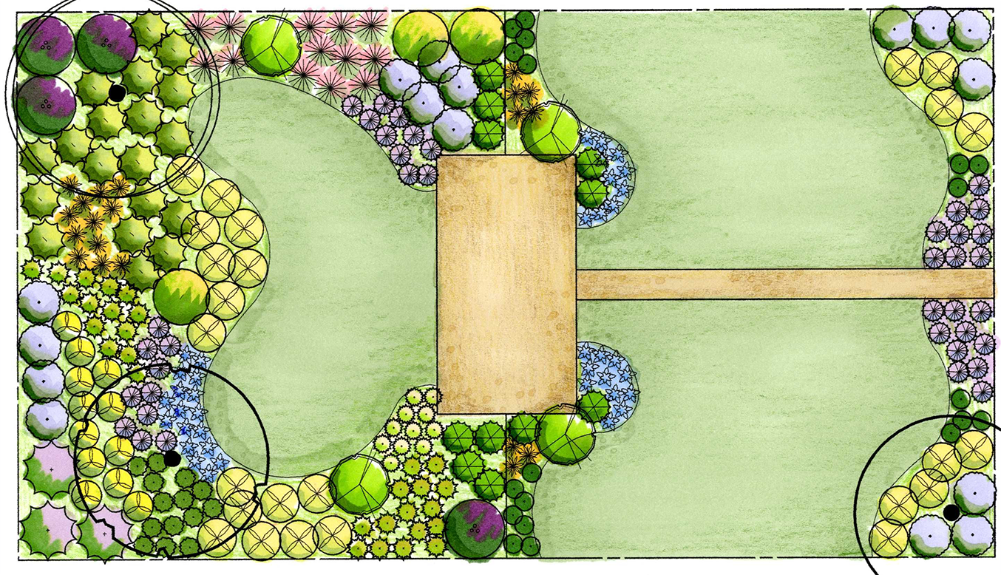
The planting plan for Plot 2 shows the layout and spacing of the different plant types in the plot.
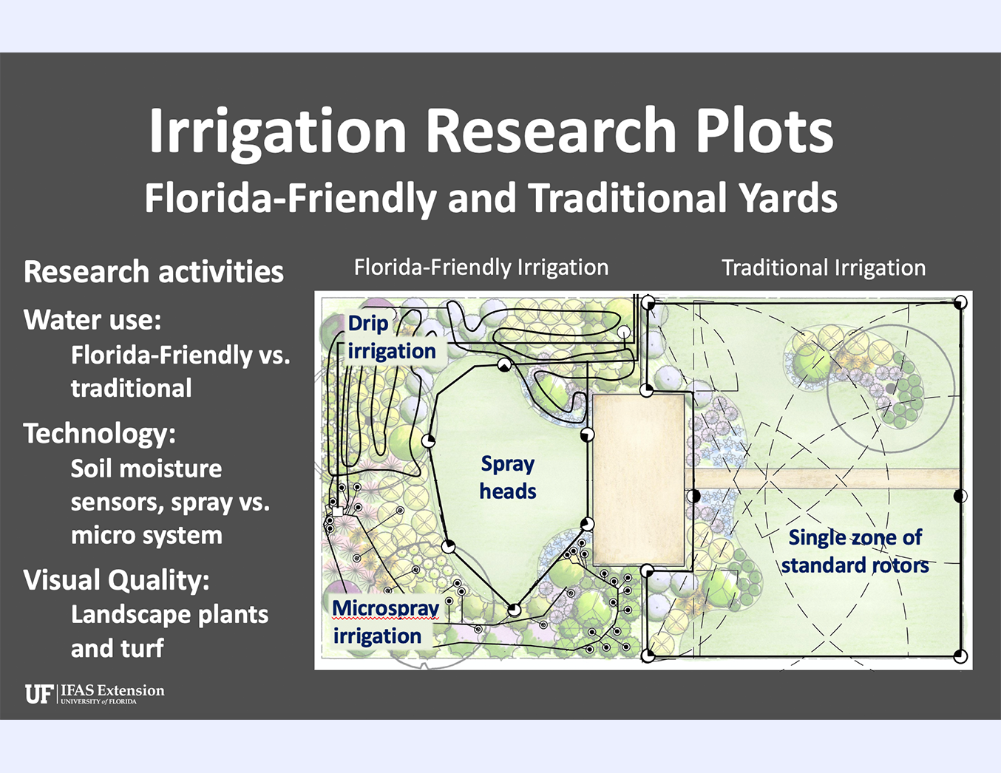
The informational sign on Plot 1 shows the layout of the irrigation and the different types of systems used in the front traditional yard and back FFL yard.

An aerial view shows the layout of the three replicate plots with the front walkways and the concrete slab that represents the house. The traditional front yards face the street and the FFL back yards with small turf areas are in the back of the “house”.
